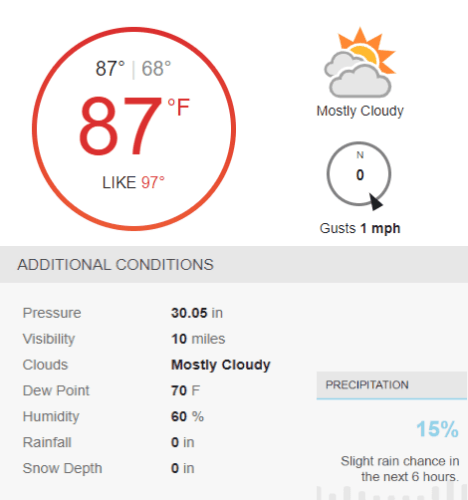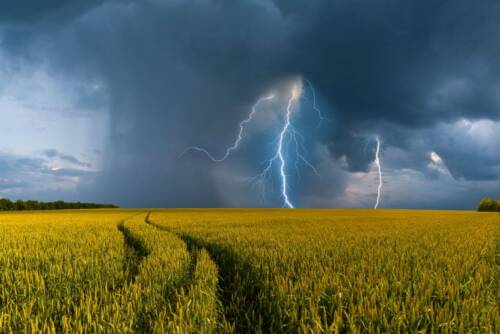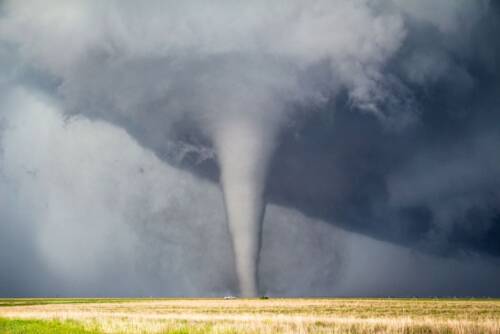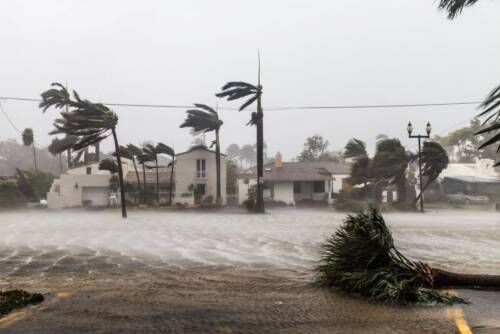How to Read a Weather Forecast: Key Symbols and Terms Explained
Weather, an omnipresent and constantly evolving force of nature, significantly influences numerous industries and sectors worldwide. From utilities and commodity trading to Emergency Management Agencies and TV broadcasting, the impact of weather conditions can either bolster profits or create challenges that demand strategic adaptations. In light of this, the ability of business decision-makers to read and interpret weather forecasts can be critical.
In Summary:
- Weather’s Business Impact: Weather conditions can significantly affect industries and government agencies. Accurate forecasts help decision-makers plan, adapt, and maximize profits.
- Understanding Forecast Components: Familiarity with temperature, precipitation, wind speed, humidity, and atmospheric pressure helps businesses make informed decisions and prepare for operational impacts.
- Severe Weather Awareness: Recognizing forecasts for severe weather events like thunderstorms, tornadoes, and hurricanes is essential for protecting employees, assets, and operations.
- Importance of Accurate Forecasts: Businesses need precise weather data to make effective decisions. Advanced models, like Climavision’s Horizon AI suite, offer tailored, high-resolution forecasts.
Reading and Interpreting Forecast Steps:
1. Get Familiar with the Forecast Layout
Understanding the layout of a weather forecast is akin to reading a map. Familiarize yourself with key components like temperature, precipitation, wind speed, humidity, and atmospheric pressure:
- Temperature: The forecasted high and low temperatures indicate the expected range of temperature for the day.
- Precipitation: This element denotes the chance of rain, snow, or other forms of precipitation, often expressed as a percentage.
- Wind Speed and Direction: Look for information on wind speed and direction to determine how breezy or gusty it will be.
- Humidity: Humidity levels indicate the amount of moisture present in the air, influencing how comfortable or sticky it might feel.
- Atmospheric Pressure: Atmospheric pressure provides insights into potential weather patterns, such as high or low-pressure systems. High pressure often means dry weather with sunshine. Low pressure often means clouds and precipitation.

Image courtesy of Weather Underground
2. Master Weather Symbols and Icon
Visual cues are invaluable in quickly grasping forecasted conditions. These symbols give a general overview of the day so it’s important to decipher weather symbols. Some common examples include:
Sun: Clear skies and bright sunshine.
Cloud: Overcast or partly cloudy conditions.
Raindrop: Indication of rain showers.
Snowflake: Signifies snowfall or wintry precipitation.
Thunderstorm: Represents the potential for thunderstorms.
Wind: Depict wind direction and speed.
3. Analyze Temperature Ranges
Temperature isn’t just a number – it’s a predictor of operational needs. Anticipate temperature fluctuations and adjust strategies accordingly, whether it’s adjusting employee uniforms or optimizing product storage.
4. Decode Precipitation Probability
Probability of precipitation (PoP) indicates the likelihood that precipitation will occur at an exact forecast location. A higher percentage indicates a greater chance of rain, snow, or any other form of precipitation occurring within the forecasted time frame. Additionally, forecasts may include additional details such as the expected duration of the precipitation event.
5. Consider Wind Speed and Direction
Wind isn’t just a breeze – it’s a game-changer for outdoor operations such as aviation and Unmanned Aerial Vehicles (UAV). Higher wind speeds can make these operations challenging or even dangerous, while wind direction can influence temperature perception (e.g., a cold wind blowing from the north).
6. Assess Humidity Levels
Humidity affects how we perceive temperature and overall comfort. High humidity levels can make hot temperatures feel even more oppressive, while low humidity can cause dryness and discomfort. Look for humidity values in the forecast to help gauge how safe employees are working outside, how many water breaks are necessary and the impact on exposed products if they are sensitive to humidity.
7. Take Note of Atmospheric Pressure
Changes in atmospheric pressure often indicate weather pattern shifts. High-pressure systems generally bring fair weather with clear skies, while low-pressure systems usher in cloudier and potentially stormier conditions. Understanding the atmospheric pressure trends can help decision makers anticipate changes in weather patterns and thus adapt more efficiently.
Be on the Lookout for Severe Weather
In addition to reading and interpreting weather forecasts, it is important that community and business leaders know the signs of incoming severe weather. Below are typical forecast descriptions and elements for dangerous weather events commonly experienced in the United States.
Severe Thunderstorms

These convective events are characterized by intense thunder and lightning, strong winds, heavy rain, and sometimes hail. Weather forecasts for severe thunderstorms may include the following information:
- Thunderstorm Outlook: Forecasts may provide an outlook indicating the likelihood of severe thunderstorms in a specific area. This outlook could be categorized as “Slight Risk,” “Enhanced Risk,” “Moderate Risk,” or “High Risk,” depending on the severity and coverage of the storms.
- Severe Thunderstorm Watch: A watch will be issued when conditions are favorable for the development of severe thunderstorms in and close to the watch area.
- Severe Thunderstorm Warning: A Severe Thunderstorm Warning will be issued when a severe thunderstorm is detected or imminent. A severe thunderstorm produces winds of 58 mph or greater and/or hail of 1 inch in diameter or greater.
- Timing and Duration: Forecasts often provide an estimated time frame for when severe thunderstorms are expected to occur. This information helps people prepare and take necessary precautions.
- Wind Speeds: The forecast may include details about the expected wind speeds associated with the severe thunderstorms. Higher wind speeds increase the risk of downed trees, power outages, and property damage.
- Hail Potential: Since severe thunderstorms can produce hail, forecasts may indicate the size and potential impact of hailstones. Larger hailstones pose a higher risk of property damage and can be dangerous for individuals caught outside.
- Heavy Rainfall: Forecasts may include information about the expected rainfall rates during severe thunderstorms. Excessive rainfall can lead to flash floods, causing rapid rises in water levels and potential damage to homes and infrastructure.
Tornadoes

Tornadoes are violent rotating columns of air that extend from a thunderstorm to the ground. When severe weather forecasts indicate a heightened risk of tornadoes, they may include the following details:
- Tornado Watch: A tornado watch is issued when atmospheric conditions are favorable for tornado development. It covers a specific area and time frame, indicating that tornadoes are possible, and people should stay alert.
- Tornado Warning: A tornado warning is issued when a tornado has been sighted or detected by radar or is imminent. It means that people in the warned area should take immediate action to protect themselves.
- Enhanced Fujita Scale: Forecasts may mention the Enhanced Fujita Scale (EF Scale), which rates the intensity of tornadoes based on damage surveys. The EF Scale ranges from EF0 (weakest) to EF5 (strongest) and helps convey the potential severity of tornadoes in the forecasted area. An EF0 tornado produces wind speeds of 65-85mph which can still cause significant damage.
- Tornado Paths: If possible, forecasts may provide information about the potential paths or tracks that tornadoes might follow. This information helps residents in the warned area take precautions and seek shelter in the safest possible locations.
Hurricanes

Hurricanes are large, powerful tropical cyclones with sustained winds of 74 miles per hour (119 kilometers per hour) or higher. When forecasting hurricanes, the following information may be included:
- Hurricane Watches and Warnings: Watches and warnings are issued to alert people of potential hurricane threats. A hurricane watch means that hurricane conditions are possible in a specific area within 48 hours, while a hurricane warning indicates that hurricane conditions are expected within 36 hours. These alerts help residents prepare and take necessary actions.
- Projected Path: Forecasts typically include a projected path or track for the hurricane, based on current data and predictive models. This track provides an estimate of where the hurricane is expected to make landfall or move within a specific time frame. It is important to remember that anyone within the forecast cone, not just the track, should expect potential impacts.
- Intensity and Category: Forecasts may mention the expected intensity of the hurricane and its corresponding category on the Saffir-Simpson Hurricane Wind Scale. The scale ranges from Category 1 (weakest) to Category 5 (strongest) and provides an indication of the potential wind speeds and storm surge associated with the hurricane.
- Rainfall and Flooding Potential: Forecasts often provide information about the expected rainfall amounts associated with the hurricane. Heavy rainfall can lead to widespread flooding, especially in coastal areas and low-lying regions.
- Storm Surge: Storm surge, the abnormal rise in water levels along the coast, is a significant concern during hurricanes. Forecasts may include details about the potential storm surge height, helping coastal residents understand the magnitude of the coastal flooding threat.
It is important to note that severe weather conditions, such as severe thunderstorms, tornadoes, and hurricanes, require continuous monitoring, and individuals and businesses should rely on official updates and follow the guidance of local authorities and meteorological agencies to ensure their safety.
Are You Using The Most Accurate Forecasts?
Weather forecasts are valuable tools that empower business leaders to plan operations, keep employees and customers safe, and make informed decisions. By understanding the layout, symbols, and key elements of common weather forecasts, community leaders and business organizations can confidently interpret the data and apply it to plans and operations.
Unfortunately, it doesn’t matter how well anyone reads a forecast if it is actually inaccurate. That is why it is crucial for decision makers to ensure first that they are getting the most accurate weather data and forecasts. At Climavision, we push the boundaries of forecasting by crafting our own advanced Numerical Weather Prediction (NWP) Models, meticulously calibrated to account for the evolving landscape of extreme weather patterns in our changing atmosphere. Our Horizon AI weather forecasting product suite encompasses the Horizon AI Global, HIRES, Point and Subseasonal to Seasonal models. From high resolution short-term forecasts to probabilistic longer term global outlooks, Climavision can arm your organization with the most accurate weather information you need to protect assets and save lives. We don’t rely on government weather models for inputs to our forecasts. We source unique, high resolution observational datasets that are assimilated into our models to produce better forecasts. Our AI and computational capabilities enable us to tailor these forecasts to precisely match your unique use cases. If you’d like to learn more about our weather forecasting solutions and how they can benefit you, contact us.






